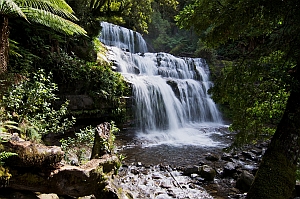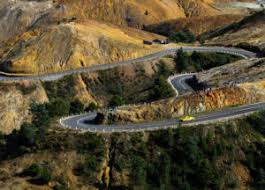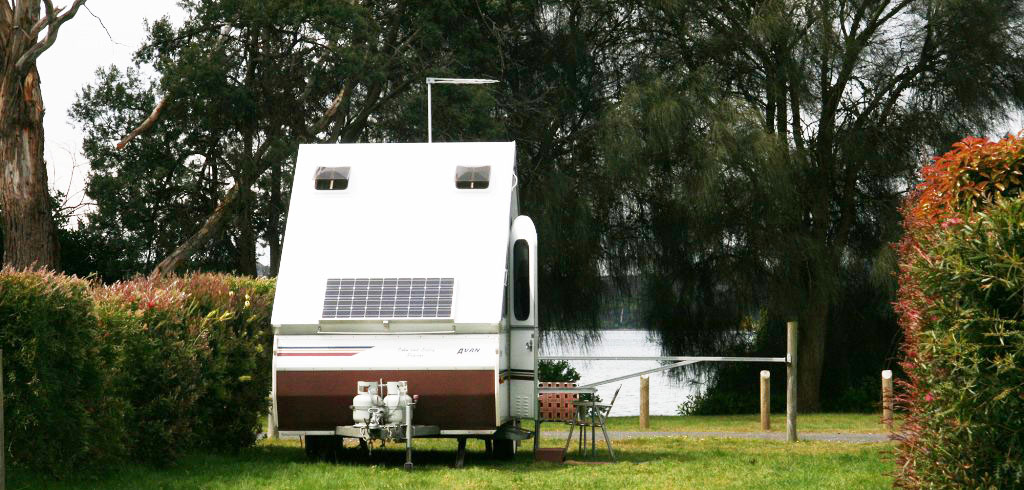Tasmania’s beauty is unsurpassed, and one of the best ways to enjoy all of Tasmania is with a road trip. For many tourists, towing a caravan from destination to destination is the ultimate way to enjoy their long holiday. To keep you safe when caravanning across Tasmania, we have compiled this list of suggestions and safety tips.
Not all popular destinations are caravan friendly
There’s plenty to see in Tasmania, and some of Tasmania’s wonderful tourist destinations are situated well away from the major highways. For some destinations you will be required to drive along very narrow unsealed bendy roads that may only be suitable for a 4WD. These roads also tend to be one car width wide.
When planning your caravanning road trip, a wise suggestion would be to stop at a Service Tasmania shop to get advice for caravanning in the region. Service Tasmania also provide excellent maps and resources for sale at their shops as well as tourism information that will ensure you are safe and satisfied when touring.

An example of a destination not suitable for caravans is Liffey Falls in the north of Tasmania. The main access road to this popular tourist destination is only suitable for smaller vehicles, and an alternate route has been made accessible for larger vehicles such as RV’s and buses. If ever in doubt if the road is suitable, simply do not take the risk. Seek advice, and stay safe.
Tasmanian roads bend a lot

Tasmania doesn’t have a lot of straight roads. There are times you will drive around Tasmania and ask yourself why there is even a bend in the road at all! Roads that meander around small hills and mountains are common in Tasmania. When driving along our roads with a caravan, be sure to understand that a bend in the road will come sooner rather than later and drive accordingly. Use a GPS when driving to check for any upcoming bends in the roads.
Safety Check List
Before embarking on your caravanning holiday perform the following checks to ensure you’re safely prepared for your journey:
Vehicle Basics
- Your Vehicle
Check oil, water, brake fluid, the battery, and all other vehicle safety checks. Refer to your Vehicle’s User Manual for a full description of what particular safety checks you need to undertake. - Tyres
Also inspect all tyres carefully and remember, when towing heavily loaded trailers your vehicle’s tyre pressures should be increased to the level recommended in the owners handbook or on the tyre placard. If in doubt, contact your local tyre dealer. - Wheel Nuts
Check that your vehicle and trailer wheel nuts have been tightened to the manufacturer’s specifications.
Hitching your Caravan
- Couplings
Ensure the coupling socket and ball match in size. Ensure that the coupling is correctly and securely fastened. - Safety Chains
Check that the safety chains are correctly connected. - Lights & Indicators
Check to ensure that the trailer brake and light connections are secure and that all lights work. - Plates & Registration
Check that the towing lights, number plates and registration labels of your caravan are clearly visible. - Reversing Catch
Disengage any reversing catch fitted to the trailer coupling (as used with over-run brakes).
Testing your Caravan
- Test the brakes
Make one or two test stops to check that the brakes are working properly. - Secure and balance your load
Ensure your load is properly secured. Also, limit the amount of load in the boot of the tow vehicle. Check that the refrigerator door is closed securely. - Mirror Check
Make sure the rear vision mirrors on the tow vehicle are properly adjusted. - Gas Cylinders
Ensure the gas cylinders on your caravan are properly secured, and are turned off fully. - Awning
Check that the roll out awning is stored away and locked in the travel position - Jockey Wheel
Remove the jockey wheel from it’s clamp and store it in the boot of the car or RV, or if it is of the swivel mount variety, lock it in the travelling position. - Stabilisers
Check that the front and rear corner stabilisers are in the up position. - Trailer Handbrake
Ensure that the handbrake of the trailer has been correctly released. - Windows and roof hatches
Check the roof hatches, windows and stone shields are secure. - Water & Electrical Cords
Check that water, sullage and electrical cords have been disconnected and stored away. - TV Antenna
Check that the TV antenna is in the travel position

